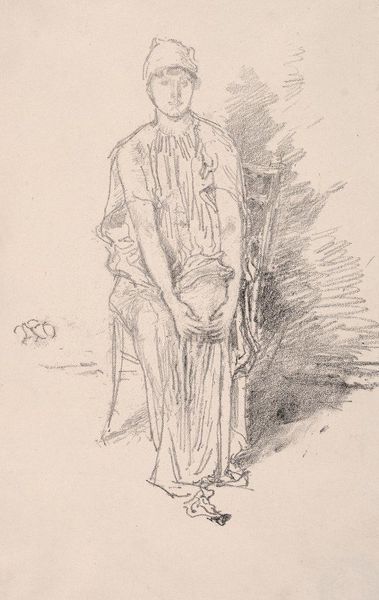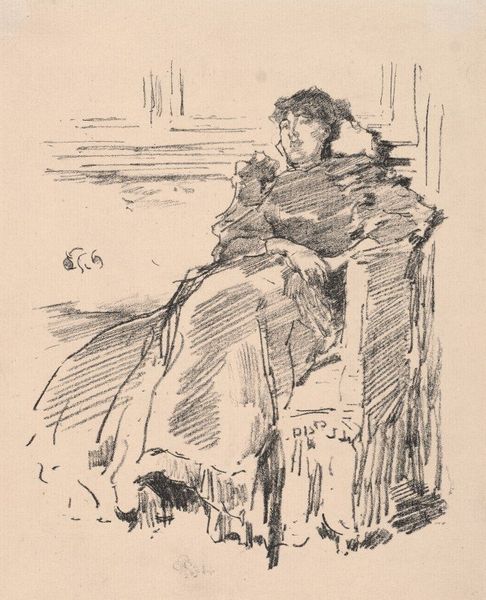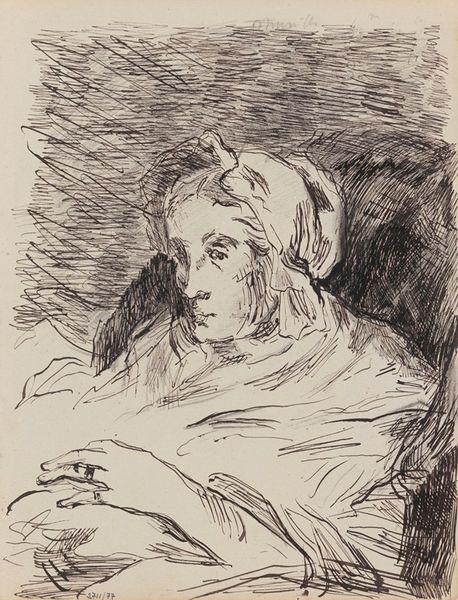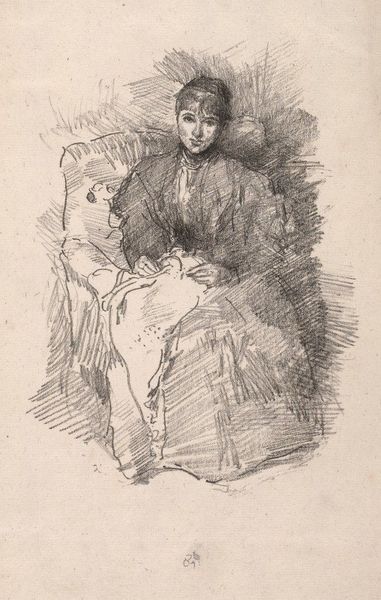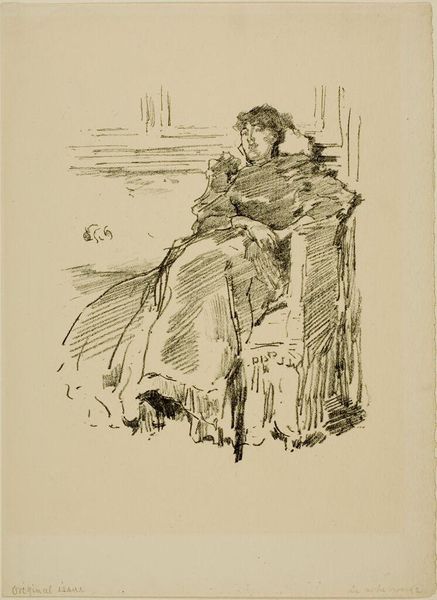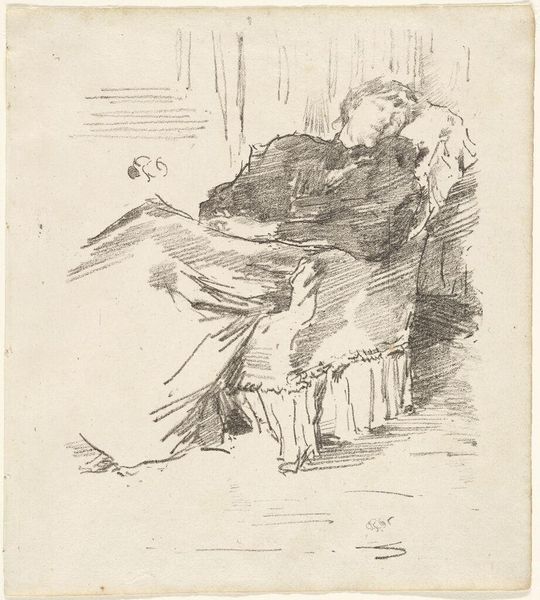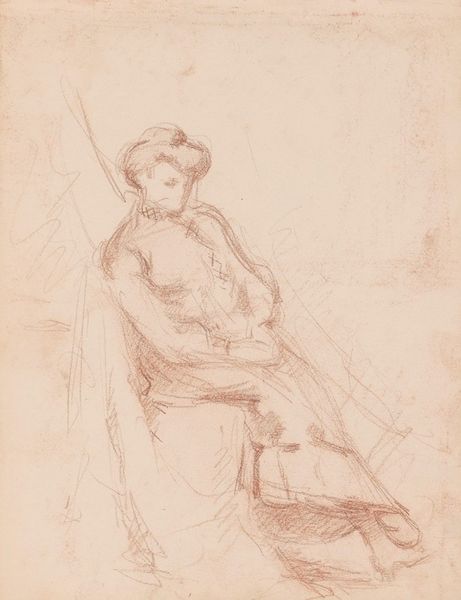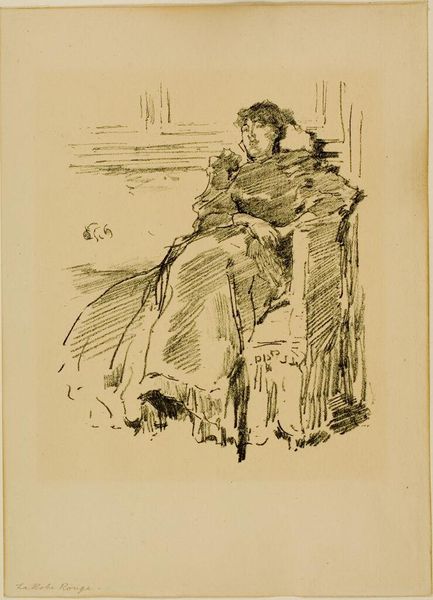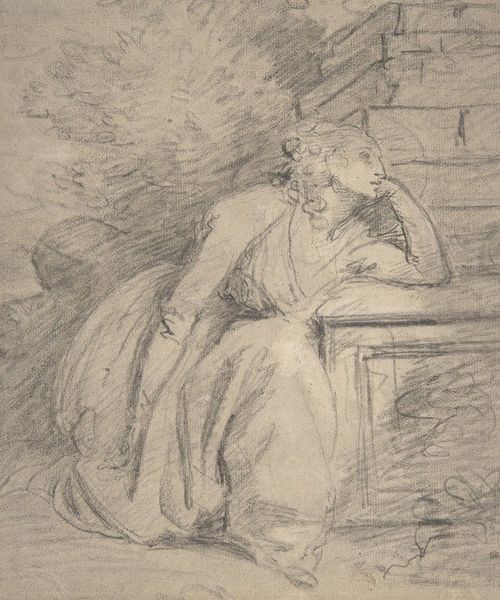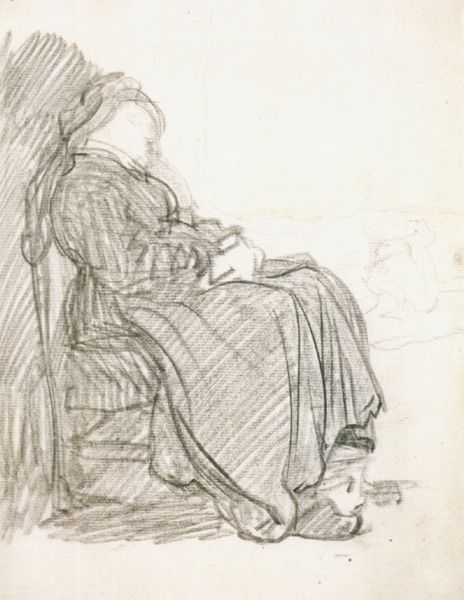
drawing, pencil
#
drawing
#
impressionism
#
pencil
Copyright: Public Domain: Artvee
Editor: Here we have James Abbott McNeill Whistler's "Mother and Child, No. 2," a pencil drawing from 1890. There’s a delicate, intimate feel to it. It's so simple and quiet. How do you interpret this work, particularly within the context of its time? Curator: Whistler, even in this seemingly domestic scene, engages with larger societal questions. How are mothers and childhood represented and valued, not just in art but also in the broader social fabric? The Impressionists often challenged academic conventions by depicting everyday life, yet even those depictions carry political weight. The rise of industrialization led to shifting family structures, so how might Whistler be reflecting or reacting to that? Editor: So you're saying this seemingly private scene might actually have been a statement? Curator: Precisely. Art is rarely created in a vacuum. Whistler positions the scene on a vaguely-defined ‘stage’, further emphasizing that the act of ‘mothering’ has to be performed within constraints – some comfortable (like a padded seat), others obscure (like a dark backdrop). Notice also Whistler’s deliberate ambiguity. Is the mother shielding the child or lost in her own thoughts? This could suggest tensions and complexities beneath the surface of a seemingly peaceful tableau. Does that nuance change your view? Editor: Definitely. I had assumed it was a purely sentimental piece, but I see now that it raises interesting questions about the role of women and motherhood in late 19th-century society. Thanks, that really helps add a layer of meaning I hadn’t considered before. Curator: Absolutely. These are precisely the questions that artworks encourage us to ask about the world.
Comments
No comments
Be the first to comment and join the conversation on the ultimate creative platform.
